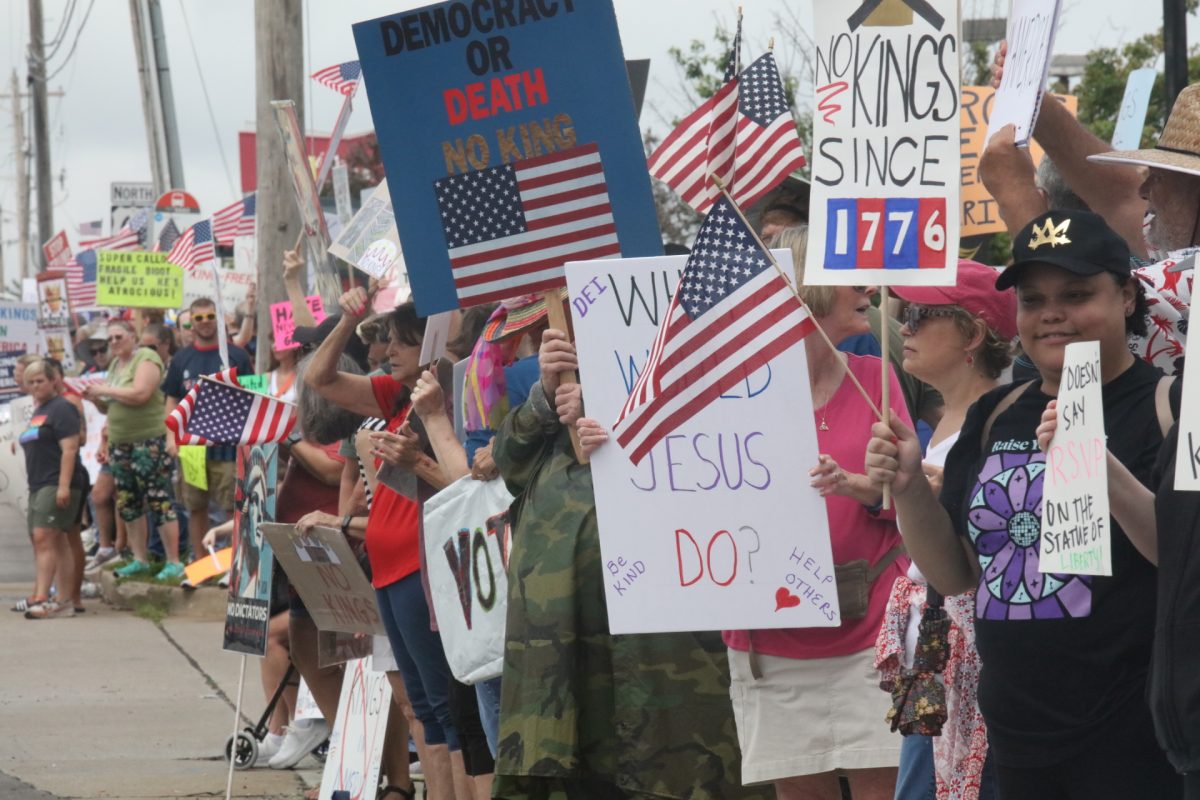While it hopes to receive $20 million in funding being considered by the Missouri House of Representatives, the Metro transit agency Board of Commissioners last week approved a fiscal 2010 budget that retains service cuts imposed this year.
The board voted Friday to approve a $189.2 million operational budget for fiscal 2010. That budget is down from the $221.6 million that the board approved for fiscal 2009. Metro officials are projecting the transit agency will spend $210 million by the end of fiscal 2009.
Metro Controller Kathy Klevorn also told the board that if the transit agency sees no new revenue by 2010, more transit-service cuts would be recommended for early 2011.
“If additional funding is not realized by calendar year 2010, service cuts in early 2011 are imminent,” she said.
On March 30, Metro’s buses and Call-A-Ride vans ceased operation in south and west St. Louis County outside the Interstate 270 loop. MetroBus service was cut by 43 percent, including the closing of 24 routes. In addition, more than 500 employee positions were cut.
The Missouri House is considering legislation that would appropriate a one-time emergency contribution of $20 million to Metro for transit service. The funds would come from the Federal Budget Stabilization Fund.
Metro officials had hoped to temporarily restore one-third of those routes with a proposed $12 million in federal congestion funds through the East-West Gateway Council of Governments, Federal Transit Administration and Federal Highway Administration. But those funds recently were denied.
With no bus service outside I-270 in south and west county, north county residents outside I-270 still have limited bus service.
Metro officials have said north county has a greater transit need than south and west county. Metro Call-A-Ride van service to disabled riders has been reduced 15 percent. Metro officials said this reduction was needed because the paratransit service operates within the same areas already serviced by fixed-route bus service.
MetroLink light-rail train service was eliminated 32 percent by running those trains less often. Outside peak hours, the Shrewsbury line will convert into a shuttle connecting to the eastbound line from Lambert-St. Louis International Airport at the Forest Park station. Additionally, no extra trains will be offered for special events in Missouri.
Among all of the approved cuts, Metro availability slightly decreased in the city of St. Louis, but dramatically dropped in St. Louis County. While 98 percent of city residents have Metro service within one-quarter of a mile from their homes, 58 percent of county residents have service that near.
Before March 30, more than 93 percent of county residents had Metro service within one-quarter of a mile of their homes.
And while Metro service is within one-quarter of a mile from 99 percent of city jobs, 71 percent of county jobs now have that service availability.
Faced with a mounting deficit, the Metro Board of Commissioners in December approved substantial service cuts, including the elimination of 553 of the transit agency’s 2,365 employee positions.
The board voted unanimously in favor of $35.7 million in transit cuts, the deferral of $10.9 million in non-immediate expenses and the reduction of $3.4 million in administrative costs to help offset a projected $50 million deficit in fiscal 2010.
With these cuts, Metro officials estimate that the agency should operate without a deficit until June 30, 2010. But officials also projected a 2009 ridership loss of 9.5 million passengers of the 52 million passengers it would expect to serve if service levels were not cut.
The decrease in service also comes with increased ridership costs that were effective Jan. 1. The Metro board in November approved the first in a series of fare in-creases to raise roughly an additional $7.2 million this year to help combat projected 2010 deficits.
MetroLink one-way fares increased from $2 to $2.25 on Jan. 1 while MetroBus one-way fares jumped from $1.75 to $2.
While Metro fares increased by 25 cents per one-way trip Jan. 1, they also will jump an additional 25 cents July 1, 2010.
Metro officials estimate that the 25-cent fare increase plus requiring passes will generate an additional $7.2 million with a total ridership of 53.2 million people. The additional 25-cent increase plus passes in July 2010 will generate an additional $9.2 million, but also result in a projected ridership of 51.5 million people.
Metro officials have considered these options after more than 51 percent of county voters rejected Proposition M Nov. 4.
Prop M was a proposed half-cent sales tax that would have raised $80 million a year to be split evenly to fund Metro maintenance of public-transportation systems and construct light-rail expansion to Florissant and Westport.
Besides Prop M’s rejection, Metro received $10 million less from St. Louis County in 2008 than it had in 2007.
Besides transit cuts, Metro officials already have imposed salary freezes in fiscal 2006, 2007 and 2009, have slowed the filling of vacancies, made employees pay a higher percentage of premiums and co-pays and increased full-retirement age by five years for participants of the agency’s salaried pension plan.
Transit officials do not believe that the 2009 cuts will be enough after 2010, when they likely will have to continue cutting as regional sales-tax revenue is expected to drop 1 percent to 2 percent over the next three years.
With sales-tax revenue down through economic pressures, Metro officials emphasized that the community ultimately must decide whether the region will have access to the same level of service that it has now.
Additionally, Metro CEO Bob Baer has said that he would like to put another sales-tax initiative before county voters by next April.
“Obviously, the region — through Metro — has made a huge investment in the infrastructure and the system for the region,” Klevorn said. “And currently, operations inflate at approximately 3 percent every year just like any other business …
“The regional sales taxes we receive today are just not enough to accommodate the operation and the local-match requirement for federal grants. So obviously for 2010 and beyond, our stakeholders and taxpayers are really at the point of having to make a necessary decision whether they’re going to apply more funding for the system that we have in place.”







